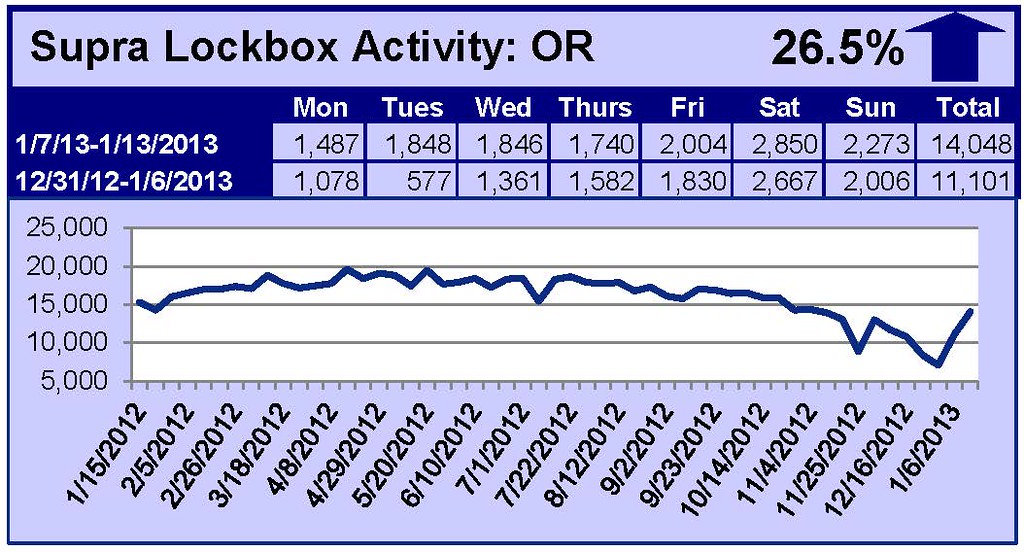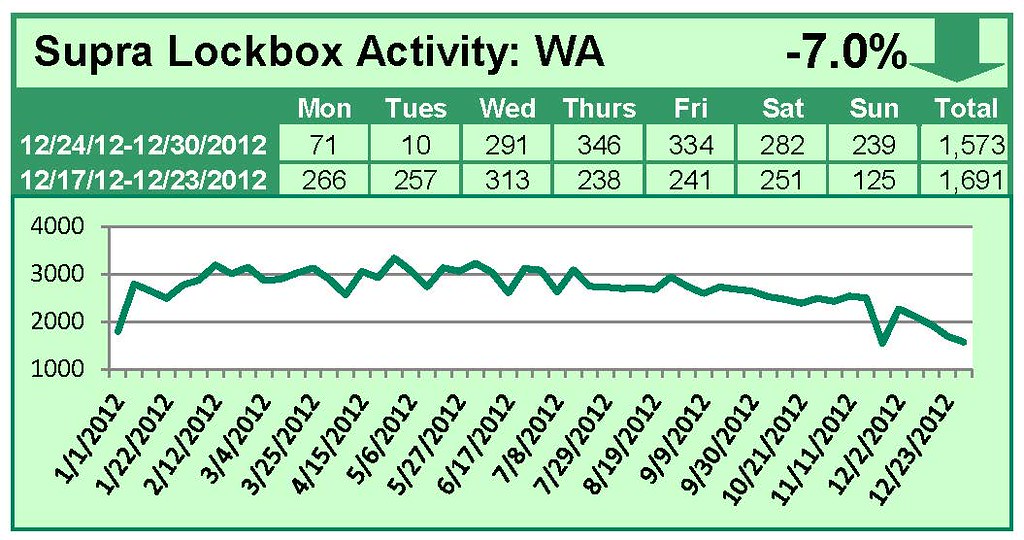Following is a guest post by Jo Becker, Education/Outreach Specialist for the Fair Housing Council of Oregon.
Lead poisoning is of greatest concern with respect to children. This you do know…
We did a very informal survey and found that of the over 500 landlords asked, 73% owned or managed pre-1978 properties (over 9700 individual units, in fact) and almost all (91%) knew that young children are at the greatest risk of lead poisoning. That’s good news; this key message from the Dept. of Housing and Urban Development (HUD) and the Environmental Protection Agency (EPA) has been received.
However, we also found:
- · …that 25% still don’t know that HUD and EPA have required lead disclosure in all units built prior to 1978 (including use of a specific brochure on the subject) prior to contract since 1996 (see boxed insert below).
- · … that 41% are still not aware that HUD / EPA have also required disclosure (with use of a different brochure) prior to many repairs or renovations made to pre-78 properties since 2008.
- · …that 50% didn’t know HUD / EPA has required that many repairs or renovations be done by a certified lead-safe contractor since 2010.
- · … that 37% still don’t know it has been illegal under the federal Fair Housing Act [1] to deny housing to an applicant simply because there are children in the household (even in pre-1978 properties) since 1988.
 Suffice it to say the requirements above are real federal regulations housing providers are held liable for knowing and following. And, as recent cases demonstrate, the penalties for non-compliance can be significant.
Suffice it to say the requirements above are real federal regulations housing providers are held liable for knowing and following. And, as recent cases demonstrate, the penalties for non-compliance can be significant.
Learn more about lead disclosure and certification requirements and information about familial status protections go to the FHCO website.
The survey was informative in a few more ways:
 1. We found there’s confusion surrounding the two different HUD / EPA pamphlets referenced above. About 1/3 knew of those surveyed knew there were two different brochures; about 1/3 did not realize this; about 1/3 were unsure. To further confuse the matter, the newer “Renovate Right” pamphlet has been revised [4]. To help clarify the issue, we have provided images of each here.
1. We found there’s confusion surrounding the two different HUD / EPA pamphlets referenced above. About 1/3 knew of those surveyed knew there were two different brochures; about 1/3 did not realize this; about 1/3 were unsure. To further confuse the matter, the newer “Renovate Right” pamphlet has been revised [4]. To help clarify the issue, we have provided images of each here.
2. We learned that over half (52%) didn’t know where to find the pamphlets and their accompanying disclosure forms online. To be sure you can access these free resources we have included the URL for each here[5]:
Pre-contract Pamphlet: “Protect Your Family from Lead in Your Home”
Pre-contract Disclosure Form for Rentals
Pre-contract Disclosure Form for Sales
Pre-repair Pamphlet: “Renovate Right”
Note that the original “Renovate Right” brochure shows the outside of a house with a front lawn; the predominant color is green with “March 2008” printed on its green back cover. The revised “Renovate Right” brochure shows an interior shot of a home; the predominant color is pink with “Revised September 2011” printed on its tan back cover.
The Pre-repair Disclosure Form can be found inside the pre-repair pamplet “Renovate Right.”
3. Based on survey results, it would appear the majority of landlords are outsourcing required repairs and renovations. To help you find local professionals trained to assist you we’ve provided the URL for the EPA’s Certified Renovation Firm search tool:
Find Certified Renovation Firms
In addition, if you’re interested in becoming lead-safe certified yourself, use the EPA’s Accredited Renovation Training Programs search tool to find a class near you.
Find Accredited Renovation Training Programs. You can also call the Lead Line at (503) 988-4000 (a free service).
4. Lastly, our survey told us that over half (64%) didn’t know that a Portland-based nonprofit offers free “living lead safe” workshops, yet 83% indicated they planned to learn more about lead, reduce lead hazards, educate residents about lead, and / or inquire about a lead workshop. To help facilitate these good intentions, please allow us to introduce you to Community Energy Project (CEP)!
“Living Lead Safe” Workshops:
CEP can be reached at (503) 284-6827 or lead101@communityenergyproject.org. As a former REALTOR®, I can tell you their “Living Lead Safe” workshop would make an excellent office presentation or a wonderful seminar a sales agent could set up for his/her clientele or even a special offering a property manager could host for residents. It takes about an hour and I can tell you it is mind blowing!
Do You Know Why?
If we can extrapolate from the informal survey we conducted, most of you know that children are at the greatest risk of lead poisoning but do you know why that is or why it’s of particular concern in housing?
First of all, while there are other possible sources of lead poisoning, lead hazards are most commonly found in older homes. Lead poisoning can occur by drinking water contaminated with lead, swallowing chips of lead paint, or ingesting lead-based paint dust from remodeling or refinishing projects.
Lead paint was banned in 1978; however, the housing stock remains and so does the old paint [6]. The National Safety Council reports, 2/3 of homes built before 1940 and 1/2 of homes built between 1940 and 1960 contain lead-based paint. While few homes built after 1960 contain lead paint, consumer advocacy requirements apply to all residences built prior to 1978.
As for why lead affects babies and small children so profoundly it is because lead poisoning causes anemia, digestive problems, and damage to the central nervous system in still-developing bodies. Children exposed to lead can develop brain damage including a variety of learning and behavioral disabilities [7].
The risk to children is compounded by the fact that they (pets too) are often on the floor where lead dust too fine to see can settle and be inadvertently ingested. In addition, children (and pets) have been known on occasion to chew on woodwork within their reach, particularly when they’re teething. Even if you are careful, small children (and pets) can still accidentally ingest paint by chewing on toys that collect tiny paint dust particles.
If you have lead paint on your property and would like it removed, contact a professional. This is not required of a housing provider but if it’s something you’re considering be sure you outsource the work; it is safer to pay a professional to do the removal than to try to do it yourself.
This article brought to you by the Fair Housing Council; a nonprofit serving the state of Oregon and SW Washington. Learn more and / or sign up for our free, periodic newsletter on the FHCO website.
[1] Federally protected classes under the Fair Housing Act include race, color, national origin, religion, sex, familial status (children), and disability. Oregon law also protects marital status, source of income, sexual orientation, and domestic violence survivors. Washington law covers martial status, sexual orientation, and domestic violence survivors, and honorably discharged veterans/military status. Additional protected classes have been added in particular geographic areas; visit http://www.FHCO.org/mission.htm and read the section entitled “View Local Protected Classes” for more information.
[2]http://yosemite.epa.gov/OPA/ADMPRESS.NSF/931381DFCD9A5C308525779700424CCD/8CC7396FEBB2B1BE85257A2A006C9D01!OPENDOCUMENT
[3] http://www.justice.gov/usao/md/Public-Affairs/press_releases/Press12/
[5] Note that HUD / EPA offer some of these in alternative languages as well. Visit the HUD and EPA websites to find a comprehensive list.
[6] As long as the lead paint is sealed (painted over) and not chipping or cracking it should pose little health risks. However, special attention should be given to “friction points” where two painted surfaces rub such as windows and doors.
[7] Symptoms of lead poisoning, according to the National Institute of Health Sciences, include headaches, muscle and joint weakness or pain, excessive tiredness or lethargy, behavioral problems or irritability, difficulty concentrating, loss of appetite, metallic taste in the mouth, abdominal pain, nausea or vomiting, and constipation. These symptoms are shared by many other illnesses. However, in cases where the symptoms occur for an extended period of time and no other cause has been found, lead poisoning should be considered.







 Suffice it to say the requirements above are real federal regulations housing providers are held liable for knowing and following. And, as recent cases demonstrate, the penalties for non-compliance can be significant.
Suffice it to say the requirements above are real federal regulations housing providers are held liable for knowing and following. And, as recent cases demonstrate, the penalties for non-compliance can be significant. 1.
1. 